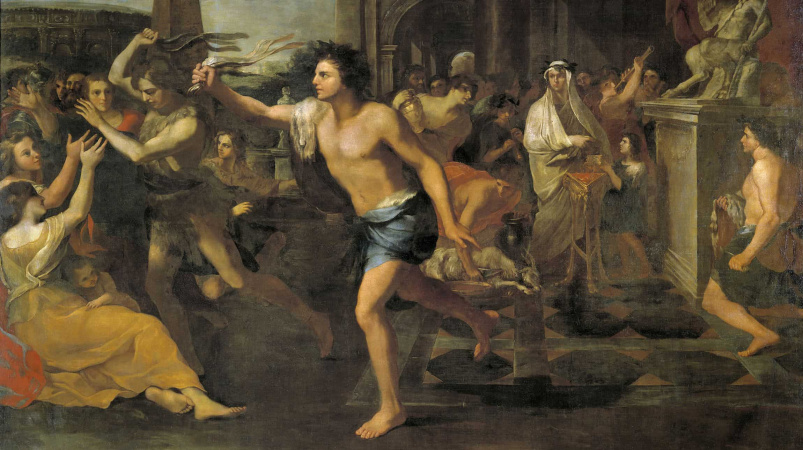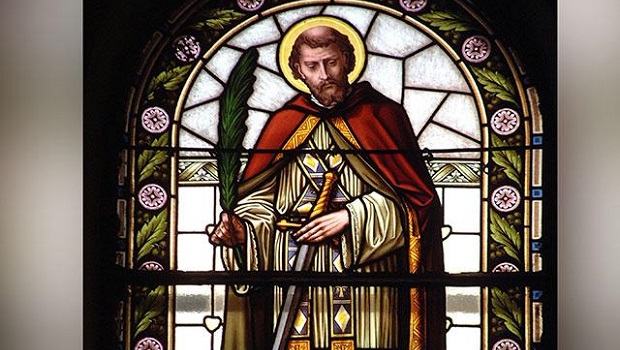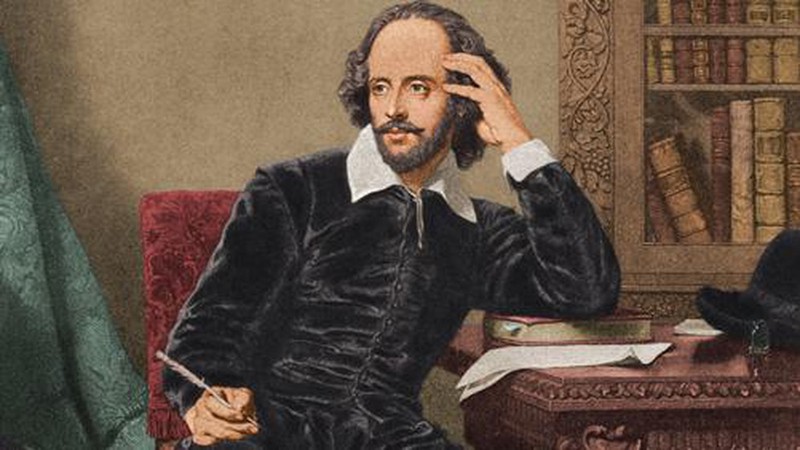1. It All Started with Naked Romans
It didn’t start out as a day of love. Its origins lie in drunken festivals and jail cells. Today, Valentine’s Day means big business for card, flower, and candy companies. From the billions of dollars spent to the number of babies born, Valentine’s Day is more than what it seems.
That’s right, Valentine’s Day did not start out with poems and chocolates. It started with a bunch of drunken, nude Romans.
Every year, the ancient Romans celebrated the feast of Lupercalia from Feb. 13-15. This pagan fertility festival celebrated an ancient god who protected the people from wolves. At the beginning of the celebration, the men would sacrifice a goat and a dog, then whip the women with the hides of those animals. Romantic, no?
 Valentine’s Day did not start out with poems and chocolates, but with a bunch of drunken, nude Romans.
Valentine’s Day did not start out with poems and chocolates, but with a bunch of drunken, nude Romans.
During this naked, drunken party, the town’s young women would get in line and wait for the men to hit them. Yep, that’s right. They wanted to be hit because they believed it would make them fertile.
After a good time of being whipped with dead animals, the ladies then had a chance to be included in a matchmaking lottery. The men drew names and then were “coupled” with that woman for the night.
2. It’s Named After a Saint
It’s hard to go from drunkenly whipping women with animal hides to canonizing saints, but Valentine’s Day did it.
In the third century, Emperor Claudius II ordered for the death of two men on Feb. 14. Their names? Valentine and Valentine. They were executed in different years, but the Catholic Church later honored them both as martyrs and named Feb. 14 St. Valentine’s Day.
Then in the fifth century, Pope Gelasius I decided to combine St. Valentine’s Day with that crazy Lupercalia festival in an effort to get rid of the pagan tradition. The festival was incredibly popular, so the Christians may have figured, if you can’t beat ’em join ’em. “So there’s reason to think that the Christians might instead have said, OK, we’ll just call this a Christian festival,” Noel Lenski, a historian at the University of Colorado at Boulder told National Geographic.

Saint Valentine
Not surprisingly, the festival didn’t die there. “It was a little more of a drunken revel, but the Christians put clothes back on it,” Lenski told NPR. That didn’t stop it from being a day of fertility and love.”
3. The First Valentines Were Passed in a Jail Cell
One of the Valentines who became a martyr was a Roman priest known for standing up for love. Emperor Claudius II (who later ordered Valentine’s death) was dealing with a crumbling empire in the third century. In a desperate attempt to hold it together, he decided to ban all marriages of young people because he believed single soldiers fought better than married ones. Father Valentine was not a fan of this idea and continued to perform marriages in secret. Once he was caught, he was imprisoned and later killed. During his time in jail, legend has it that young children used to visit and pass him notes into his jail cell.
4. Shakespeare Made It a Little Sweeter
We have Shakespeare to thank for transforming Valentine’s Day into a day to celebrate romantic love. He and Geoffrey Chaucer wrote about the holiday as a day to celebrate romantic love, and their sweeter take on it started to become popular. Shockingly, none of the ladies minded ditching the naked party.
Chaucer spoke about the holiday in his poem “The Parliament of Fowls.” To celebrate the engagement of Richard II of England to Anne of Bohemia, he wrote in his poem, “For this was on St. Valentine’s Day/When every fowl cometh there to choose his mate.”

We have Shakespeare to thank for transforming Valentine’s Day into a day to celebrate romantic love
Shakespeare also worked the holiday into his writing. In Hamlet, Ophelia says, “To-morrow is Saint Valentine’s Day /All in the morning be time/And I a maid at your window/To be your Valentine.”
5. The Cards Came Much Later
Centuries after the holiday was established, we began sending cards to each other on Feb. 14. During the 18th century, couples in England started sending cards made of paper and lace to each other. In 1797, the book The Young Man’s Valentine Writer was published to teach men how to write an appropriate love note. Might be time to bring that classic out again, am I right, ladies?
In the 19th century, factories started to mass produce paper cards. In 1913, Hallmark Cards of Kansas City offered Valentine’s cards.






